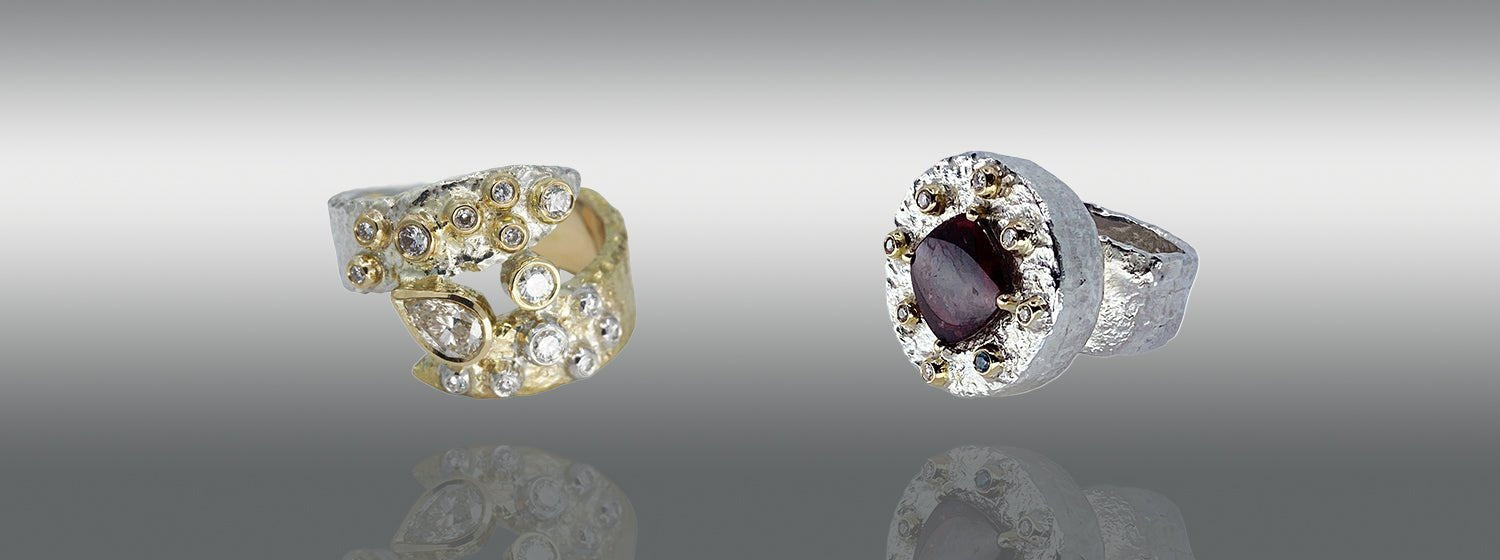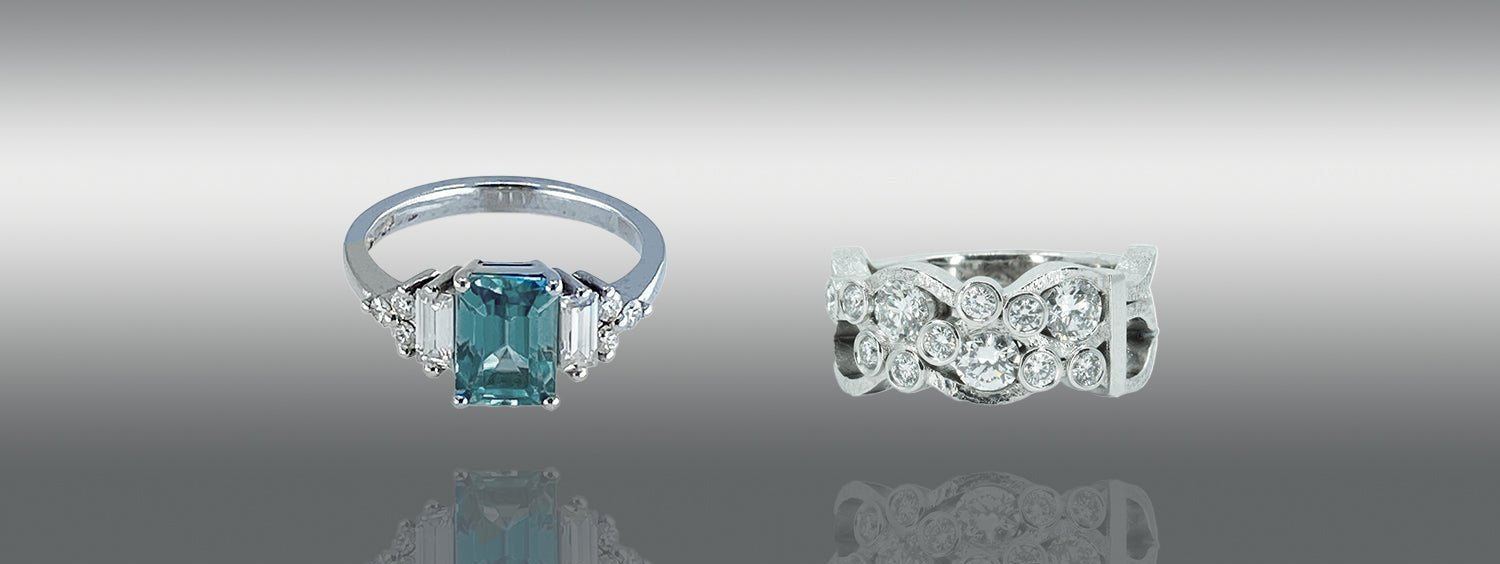Article: Alluring Amethyst the Birthstone of February
Alluring Amethyst the Birthstone of February
February birthstone history
Amethyst is the birthstone for Pisces and the month of February, and the gemstone for the 6th anniversary of marriage. It has been a popular stone amongst many cultures throughout history. Ancient civilisations revered amethyst and its vivid purple tones, and it was once as treasured and highly sought, like Diamond, Ruby and Emerald. That was until vast deposits were discovered in Africa and South America, diminishing its rarity and subsequent value. But not its captivating beauty.
However, its intrinsic monetary value is likely to be of little significance, as a massive global supply is, of course, good news for February babies looking for a great deal on amethyst jewellery.
What is an amethyst?
Amethyst is a purple variety of quartz, and the name comes from koine Greek, which translated to English means to 'intoxicate'. However, the meaning doesn't describe its striking beauty. The Greeks believed that it would guard its owner against drunkenness, and consequently, they carved out drinking vessels from the purple stone, hoping to protect themselves from the effects of alcohol.
The sentiment was echoed by Roman and Egyptian cultures, who also believed that amethyst could offer powers of protection.
Medieval warriors carried it into battle in the form of an amulet believing that it would keep them cool, calm and collected.
Amethyst is primarily composed of Silicon dioxide. Impurities of iron, aluminium or manganese compounds usually contribute to that distinctive purple amethyst colour.
It's widely used in jewellery because it is inexpensive and also due to its hardness.
Amethyst is also a popular choice among mineral collectors. Small geode sections and tumbled stones attract more amateur collectors, while seasoned collectors tend to choose prismatic crystals and giant geode sections which are significantly rarer.
Types of Amethyst
Unusually for a gemstone, its value is based on the colour rather than the carat. Amethyst can be grouped and identified according to its origin.
African Amethyst - To those in the trade this term usually applies to deeply coloured or darker amethyst, and as the name suggests can generally be found in Africa.
Amethyst Quartz or Bi-colour Amethyst - These are a mixture of Amethyst and Milky Quartz (or clear Quartz). The upper section is purple, and the lower section is white or clear. It may also be banded purple and white. This type of amethyst is usually tumbled or polished into beads.
Bolivian Amethyst - Amethyst mixed with citrine is also known as Ametrine, Trystine or Bolivianite. The latter is a reference to the fact that almost all Ametrine today is mined in the country of Bolivia.
Brazilian Amethyst - You guessed it. This type of amethyst is found in Brazil, and Brazil is where most of the world's amethyst is mined. The term is also a little deceptive as amethyst can be designated Brazilian if it originates in any South American territory. Green Amethyst - Yes, there is a green form of amethyst. However, it isn't naturally occurring; it is heat-treated to achieve its light green hue. It is also known as "Prasiolite".
Siberian Amethyst - Usually when a gem is named after a place of origin, it means it is the best in its class, and therefore, can only be found in that specific local. However, with a Siberian Amethyst, while it is true that they are exquisite, extremely rare and amongst the best examples on earth, the name is given to the highest standard of amethyst, and it doesn't necessarily mean it was unearthed in Siberia. Regardless of its origin, it has an intense purple colour and commands the highest prices.
Famous amethysts
The Empress of Uruguay
A geode is a form of hollow rock where over millions of years, crystals have formed on the inside. The largest amethyst geode found in the world is called the Empress of Uruguay, and it weighs a staggering 3.5 tonnes. It is currently on display in Australia.
Originally from the north of Uruguay, the 3.27 meters tall Empress arrived at The Crystal Caves in Atherton, Australia in November of 2007. It needed two large cranes to manoeuvre it into position.
Amethyst Scarab Bracelet of Tutankhamun
In 1922, Howard Carter discovered the tomb of the now-famous pharaoh, King Tut. Amongst many exquisite treasures made from solid gold, he found a spectacular bracelet. It was neatly placed on the chest of the mummified king. It was a solid gold bracelet made of jasper and other fine stones. The centrepiece was an amethyst scarab carved in astonishing detail. It was framed with golden beads and at the ends were two cobras - A sign of royalty.
Today, the purple colour of amethyst is recognised as the colour of royalty and amethyst can be found in the jewellery of the modern monarchy. As part of the priceless collection that is known as the crown jewels, there is the Crown Amethyst Suite of Jewels or The Kent Amethysts which can be found on display at the Tower of London.
Sweden's Napoleonic Amethyst Tiara
This parure has a few names: "Queen Josephine's Amethyst Parure", the "Napoleonic Amethyst Parure" or, simply, "The Swedish Amethyst Parure".
The tiara forms part of a spectacular set, but Swedish royals are rarely seen sporting the whole set. The tiara is thought to date back to the wife of Napoleon I and back then was worn as a necklace, but it was converted in 1976 to be used a tiara as many of the royals who have worn it have complained about its weight and cumbersome style.
Amethyst and religion
The episcopal ring of the pope is known as the "Ring of the Fisherman" Today, that piece of jewellery is known as a symbol of papal authority. The origin of the design was inspired by Jesus telling St. Peter, who was by trade a fisherman, "I will make you a fisher of men."
Consequently, a bishop is given a ring at his consecration. Usually, it’s a statement piece and also a symbol of power and is always large and made from gold. Traditionally, Roman Catholic bishops have their episcopal ring set with an amethyst.
Amethyst has other religious connotations too. It was one of the twelve stones that adorned the breastplate of the high priest Aaron (Exodus 39), and amethyst also stood for one of the twelve tribes of Israel.
How to use amethyst and its healing properties
For centuries, amethyst has been thought to protect against an endless list of ailments, and even today the stone is trendy amongst healers. The gem is attributed to have calming and soothing properties which are perfect for helping with sleep problems. If placed under a pillow at night, it can help to avoid nightmares and keep insomnia at bay.
It is usually associated with the crown chakra but can also be associated with the 3rd eye chakra. The pineal gland is found behind the third eye, and this gland regulates sleeping patterns.
Clusters and geodes are extremely popular as they protect you, your space and energy from crushing negative forces. Placing an amethyst in the vicinity of your living room or office space can help to clear out unwanted energy and intrusive electromagnetic fields. Additionally, it may help to open your mind up to spiritual power and connect you to your spiritual self. It may also be used to treat psychic disturbances and to stabilise brain imbalances - meaning amethyst crystal can help to relieve migraines and stress-induced headaches. It can provide relief from symptoms of hearing disorders like tinnitus.
Amethyst crystal increases hormone production by stimulating the endocrine glands. It enhances oxygenation in the blood and improves digestive processes. It strengthens the immune system and reduces pain and helps to recover from inflammation and bruising. It is used extensively in therapeutic massage and is a conventional treatment of arthritis.
Amethyst is cleansing and can purify, both physically and psychologically. It has the ability to raise one's spirits, promoting courage and confidence and also gives a person a cheery disposition and improves their sense of humour.
The virtues of amethyst include beauty, fulfilment, humility, a gentle and loving demeanour, sincerity, balance and wisdom.
Mala beads are used as a meditation tool to promote peacefulness and tranquillity to enhance the meditative state and also by wearing amethyst as jewellery. It can be a convenient way to bring a balance to your personality.
The properties of amethyst can vary but the precious stone has provided tangible results for many.
Are You Looking for Exquisite Amethyst Jewellery?
Are you a February birthstone baby? Or do you have a relative or a loved one who was born in the month of the amethyst? Revel in the knowledge that those vivid purple crystals can provide countless benefits to that special someone.
We have been producing handmade or bespoke jewellery for over 40 years using precious and semi-precious stones. Take a look at our extensive range of handmade jewellery, and please contact us if there is something you like.



Click Here to view alluring Amethyst jewellery in our Purple Rain collection.


